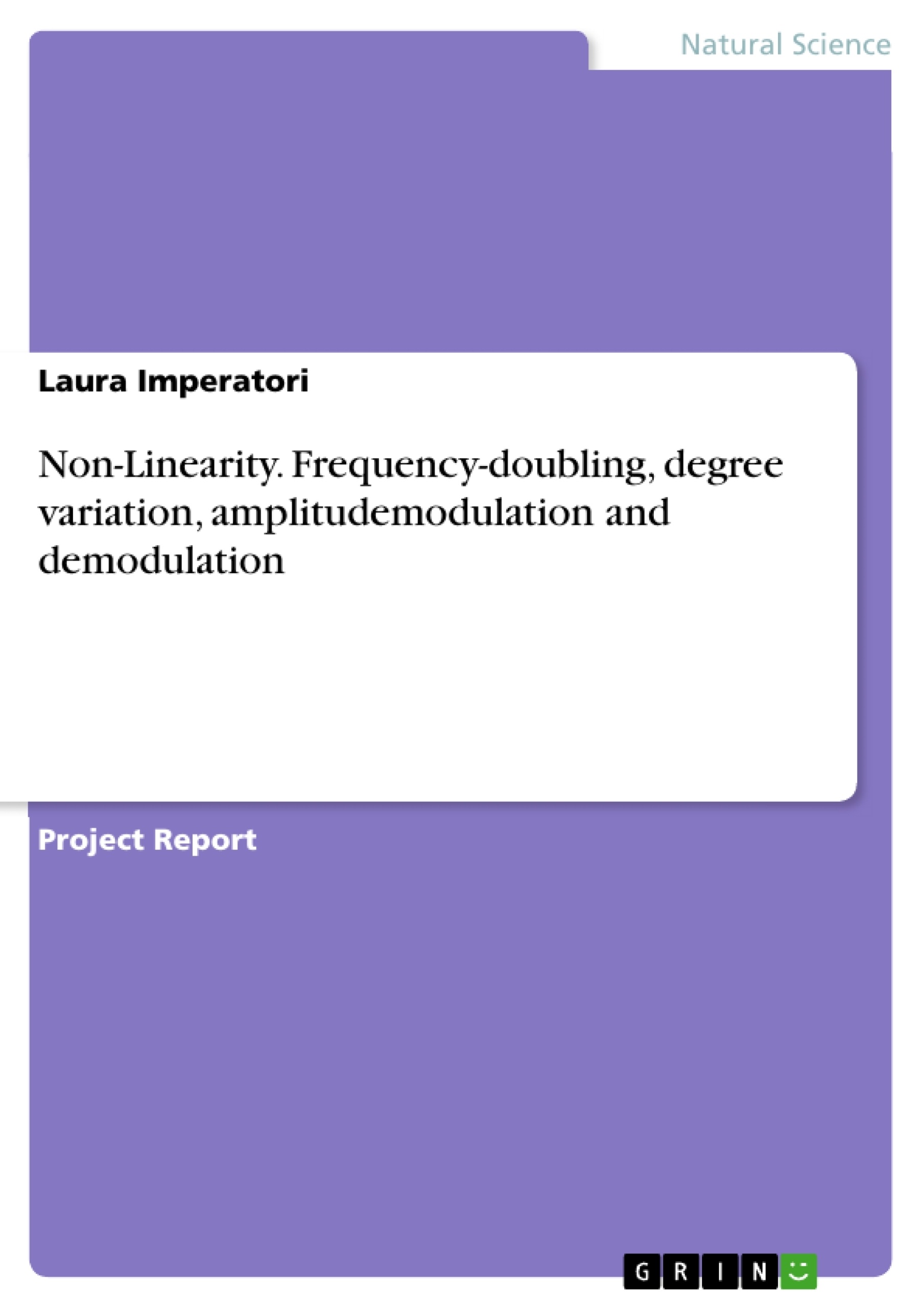In order to test non-linearity, the effects of different transfer functions of an AD633 multiplier in a given electrical circuit were investigated and compared with the theoretical expectations. First of all, the phenomenon of frequency doubling was found to occur when squaring the input voltage. Secondly, the multiplier was reconfigured to give a square-root response. This allowed us to vary the degree of non-linearity by choosing the parameters of input voltage and DC offset such that we could determine which terms in the Taylor expansion of the transfer function were relevant and hence to what degree the circuit behaved non-linearly. For a small, sinusoidal variation about a large DC level, the system was found to be weakly non-linear. For high amplitude and a low DV offset we observed strong non-linearity. Compared to weak non-linearity, we were able to detect the third harmonic as well as the first and the second one. The existence of harmonics was investigated on the PicoScope screen and verified by plotting output amplitude (dBV) versus input amplitude (dBV) and finding the gradient of the slope corresponding to the respective harmonic. Finally, frequency mixing was explored in its broader context by investigating amplitude modulation and demodulation on the same circuit board.
Inhaltsverzeichnis (Table of Contents)
- Introduction
- Theoretical Background
- Non-linear circuits in contrast to linear circuits
- Frequency doubling
- Varying the degree of non-linearity
- Amplitude modulation and demodulation
- Methods and Results
- Frequency doubling
- Square-root circuit
Zielsetzung und Themenschwerpunkte (Objectives and Key Themes)
This experiment investigates the behavior of non-linearity in electrical circuits. The main objective is to test the effects of different transfer functions on an AD633 multiplier within a specific electrical circuit, comparing the results with theoretical expectations. The experiment explores the phenomenon of frequency doubling, investigates how to vary the degree of non-linearity, and examines the broader context of frequency mixing by exploring amplitude modulation and demodulation.
- Non-linearity in electrical circuits
- Frequency doubling and second harmonic generation
- Varying the degree of non-linearity through transfer function manipulation
- Amplitude modulation and demodulation as examples of frequency mixing
Zusammenfassung der Kapitel (Chapter Summaries)
The introductory chapter sets the stage for the experiment by outlining the importance of understanding non-linearity in various fields, including engineering, physics, and mathematics. Chapter two delves into the theoretical background of non-linear circuits, contrasting them with linear circuits and exploring the phenomenon of frequency doubling. It also discusses how to vary the degree of non-linearity by manipulating the transfer function of the AD633 multiplier and introduces the concept of amplitude modulation and demodulation.
Chapter three describes the methods and results of the experiment. This chapter explores frequency doubling by investigating the relationship between input and output frequencies and voltages. It then focuses on the square-root circuit, examining the influence of DC offset and amplitude on the degree of non-linearity.
Schlüsselwörter (Keywords)
This experiment focuses on non-linearity in electrical circuits, specifically investigating frequency doubling, varying the degree of non-linearity, and amplitude modulation and demodulation. Key components include the AD633 multiplier, transfer functions, Taylor series, harmonic generation, and frequency mixing. The study employs methods such as circuit analysis, experimental measurements, and data visualization.
- Quote paper
- Laura Imperatori (Author), 2013, Non-Linearity. Frequency-doubling, degree variation, amplitudemodulation and demodulation, Munich, GRIN Verlag, https://www.hausarbeiten.de/document/266748


